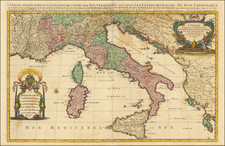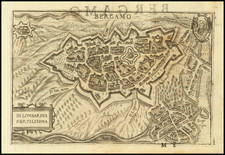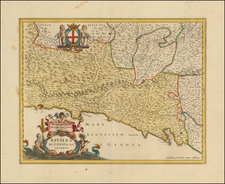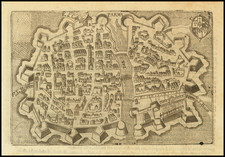Europae Tabula VI, created by Girolamo Ruscelli in Venice, in 1561, is an exemplary rendition of Ptolemaic geography of Italy, Sicily, Corsica, and Sardinia. This detailed map captures a Ptolemaic view of Southern Europe, reflecting the Classical understanding of the region's geography.
The Europae Tabula VI was created during the Renaissance, a period of renewed interest in the classical knowledge and wisdom of the Greco-Roman world. Ruscelli, an Italian polymath and cartographer, embraced this classical revival, taking inspiration from Claudius Ptolemy's 2nd-century work "Geographia." Ptolemy, a Greek-Egyptian scholar of the Roman period, is widely recognized as the father of geography, and his geographic coordinate system laid the foundation for modern cartography.
The map reflects a distinctly Ptolemaic world view, featuring a precise, gridded system and displaying several place names in their Latin forms. It covers notable bodies of water such as the Tyrrhenian Sea ("Thyrrhenum Pelagus"), and the Adriatic Sea ("Sinus Hadriaticus"), as well as the islands of Corsica ("Cyrnus Quae et Corsica"). The mainland areas are meticulously divided into regional designations, like "Tuscia sive Hetruria," a reference to the historical region of Etruria in central Italy; "Latini," the people from the ancient city of Latium; "Cenomani," a Gaulish tribe; and "Insubres," another Gaulish tribe occupying the region of Insubria.
The portrayal of Italy and its neighboring islands in the Europae Tabula VI bears witness to the rigorous approach to cartography of its era, which was still acutely focused on the rediscovery of the knowledge of the ancients. It evokes the extensive network of trade routes, population centers, and political boundaries that defined this critical region of Europe in antiquity.
In essence, the Europae Tabula VI is more than just a map—it is a historical document, a testament to the continuity of knowledge, and a window into the enduring influence of classical antiquity on Renaissance thought.
Girolamo Ruscelli (1500-1566) was a cartographer, humanist, and scholar from Tuscany. Ruscelli was a prominent writer and editor in his time, writing about a wide variety of topics including the works of Giovanni Boccaccio and Francesco Petrarch, Italian language, Italian poetry, medicine, alchemy, and militia. One of his most notable works was a translation of Ptolemy’s Geographia which was published posthumously.
There is limited information available about Ruscelli’s life. He was born in the Tuscan city of Viterbo to a family of modest means. He was educated at the University of Padua and moved between Rome and Naples until 1548, when he moved to Naples to work in a publishing house as a writer and proofreader. He remained in the city until his death in 1566.









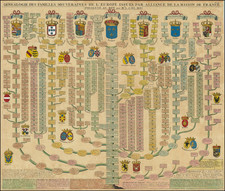
![L'Italia e i suoi principali prodotti [Italy and her Principal Products]](https://storage.googleapis.com/raremaps/img/small/89640.jpg)
